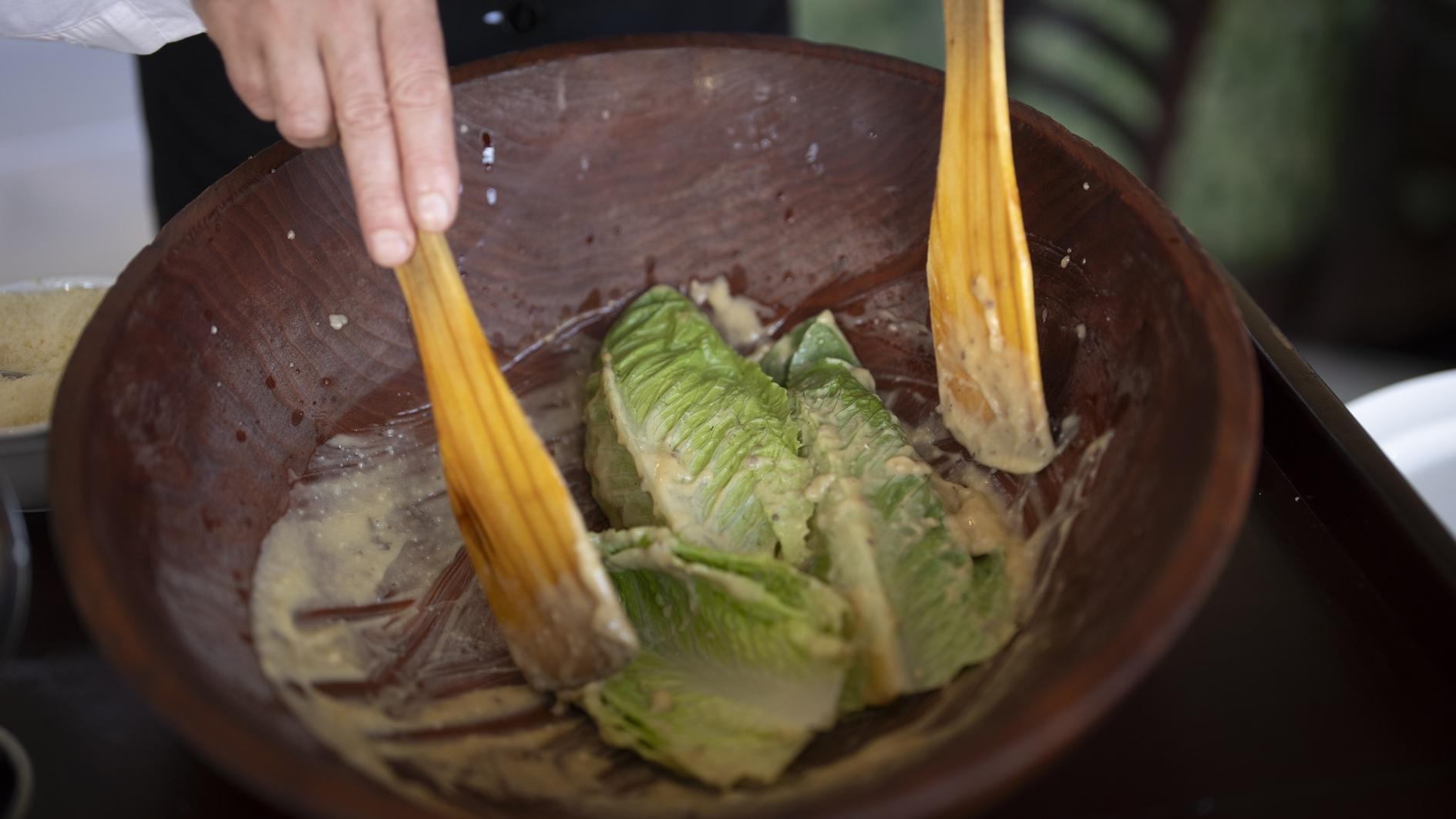
Caesar salad has something to celebrate: It’s turning 100.
Italian immigrant Caesar Cardini is said to have invented the dish on July 4, 1924, at his restaurant, Caesar's Place, in Tijuana, Mexico. It was a steamy night, and Cardini was struggling to feed an influx of Californians who had crossed the border to escape prohibition.
In the middle of the dining room, Cardini tossed whole Romaine leaves with ingredients he had on hand, including garlic-flavored oil, Worcestershire sauce, lemons, eggs and Parmesan cheese. A star was born.
Tijuana plans to commemorate the anniversary this month with a three-day food and wine festival, and the unveiling of a statue of Cardini. Caesar’s – an elegant restaurant Cardini opened in Tijuana a few years after the salad was born – says it still makes as many as 300 Caesar salads each day.
Unlike some other menu items from the early 20th century – think creamed liver loaf or aspic – Caesar salad remains a perennial favorite. Around 35% of U.S. restaurants have Caesar salad on their menus, according to Technomic, a restaurant consulting firm. And nearly 43 million bottles of Caesar salad dressing – or $150 million worth – have been sold in the U.S. over the past year, according to Nielsen IQ.
Beth Forrest, a professor of liberal arts and applied food studies at the Culinary Institute of America, said it took a few years for Caesar salad to hit the mainstream.
A recipe for it didn't make “Joy of Cooking,” one of the most popular American cookbooks, until the 1951 edition. Throughout the 1960s and 1970s, Caesar salad was often prepared tableside, giving it an air of spectacle and sophistication, she said.
Forrest said Caesar salad is ideal for the Western palate because it contains our two preferred textures: crispy and creamy. The egg yolks and Parmesan cheese are also high in glutamate acids, which give the salad the rich, salty taste known as “umami.”
“It satisfies us in many hedonistic ways, while we can still feel virtuous. It is, after all, a salad,” Forrest said.
Caesar’s many variations have also given it staying power, experts say. Chefs may add chicken, bacon or salmon, mix in kale or Brussel sprouts and make the dressing out of miso paste or tofu.
At Beatrix, a chain of five restaurants in Chicago that makes healthier versions of comfort foods, chef and partner Andrew Ashmore spreads a spoonful of yogurt-based dressing at the bottom of the salad bowl and mixes it with capers, parsley, lemon vinaigrette and champagne vinegar before adding little gem lettuce, baby arugula, bread crumbs and a generous shaving of Grada Padano cheese.
“It’s our number one selling salad, and it has been since we opened 11 years ago,” Ashmore said. “I couldn’t try to take it off the menu if I wanted to.”
Cardini was not inclined to vary his recipe. In a 1987 interview with the Honolulu Star-Bulletin, his daughter Rosa Cardini said her father was very precise in preparing his creation. He used only the tender, inner leaves of Romaine lettuce and left them whole, intending diners to pick them up with their fingers. He boiled the eggs for one minute before adding them, and he didn’t use anchovies.
There is some debate about the origins of the salad. Some claim the recipe was actually from the mother of Livio Santini, one of Cardini’s chefs and a fellow Italian immigrant. Others say Cardini’s brother Alex was the originator of the salad, which he made with limes and anchovy paste. Alex’s version was dubbed “Aviator’s Salad” because he supposedly served it to airmen from a San Diego base.
Forrest said the recipe also echoes old Italian specialties. It resembles a pinzimonio, a dressing of olive oil and lemon juice used as a vegetable dip, or a bagna cauda, a hot dip of anchovy and garlic from the Piedmont region where Cardini was born.
Caesar’s in Tijuana didn’t respond when asked about the salad’s history by The Associated Press, but the restaurant does mention Santini’s name on its website.
Business in Tijuana declined after Prohibition ended, so Caesar Cardini moved his family to Los Angeles in 1935. They bottled their Caesar dressing at home before eventually founding Caesar Cardini Foods Inc.
Rosa Cardini took over the family company in 1956 after her father's death, eventually adding 17 other dressings. T. Marzetti, a maker of dressings and dips, acquired Cardini Foods in 1996 and still sells Caesar Cardini’s brand dressings.